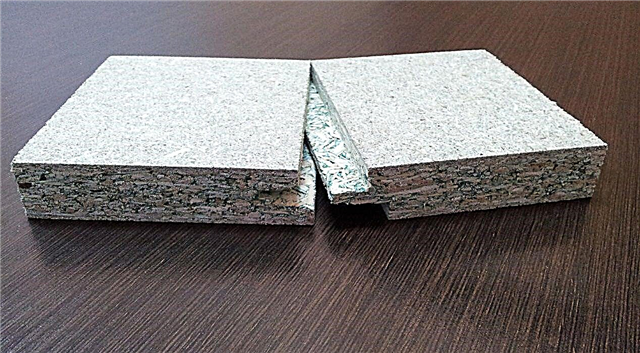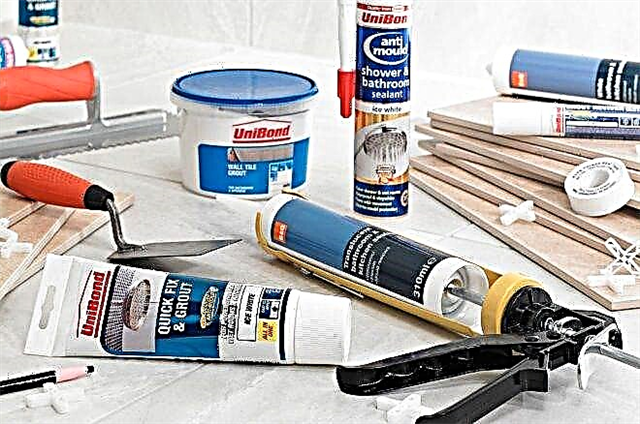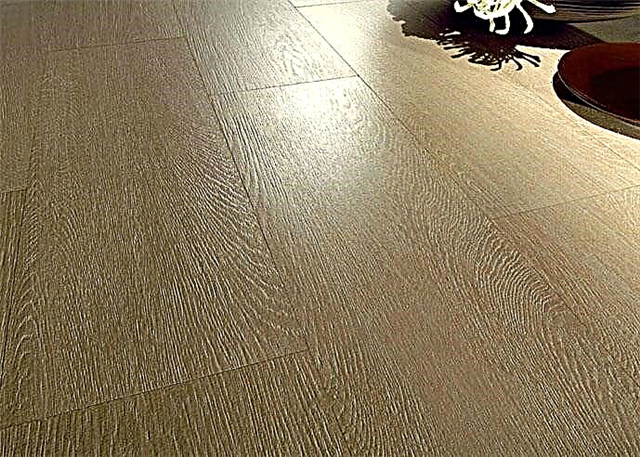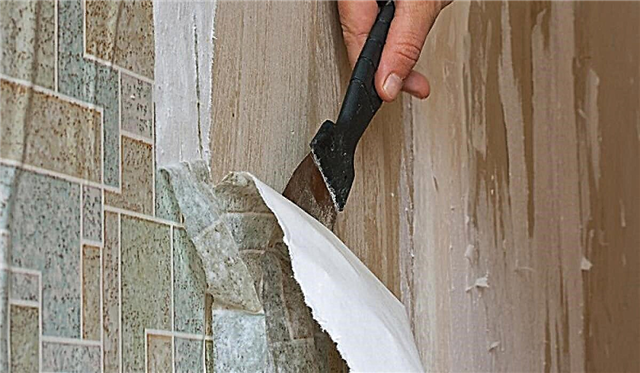 There are various ways to remove wallpaper from the walls. To do this, use a standard set of tools, special chemicals and steam generators. You can also remove the wall covering using folk methods.
There are various ways to remove wallpaper from the walls. To do this, use a standard set of tools, special chemicals and steam generators. You can also remove the wall covering using folk methods.
Before starting repairs, it is necessary to remove the old finishing material from the wall surface - this is a prerequisite. Sometimes this is not as easy as it might seem at first glance. There are various ways in which you can remove old wallpaper from the wall. It is about them and other important nuances that will be discussed in today's material.
Which way to choose: chemical or mechanical?
Many people wonder what method to choose to remove the decorative coating from the wall. In fact, it depends on the specific situation. There are cases when paper panels are removed mechanically without any problems. In this case, use aggressive chemicals. However, it also happens that it is impossible to do without them.
For example, if wallpaper was previously “planted” on PVA glue, in this case it is difficult to do without the use of potent chemical compounds.
How to quickly remove wallpaper from a wall using a spatula and knife
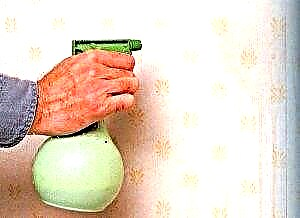 It is worth noting that this is a classic method of removing old panels. Most amateur builders use it. A step-by-step action plan is as follows:
It is worth noting that this is a classic method of removing old panels. Most amateur builders use it. A step-by-step action plan is as follows:
- with the help of a sharp clerical knife, a piece of wallpaper is torn at the top of the wall,
- for the peeled off edge, you need to slowly pull the canvas down, not allowing it to tear,
- as the wallpaper is disconnected from the wall surface, it is important to use a putty knife, with which, with translational movements, you need to pry the cloth from below.
It is also recommended to pre-wet the paper wallpaper so that it is saturated with moisture. This will facilitate the task of peeling off at times, after which the canvas will leave the wall without problems. For these purposes, it is recommended to use a regular sponge or soft roller.
How to remove vinyl wallpaper, if they are firmly stuck to the wall?
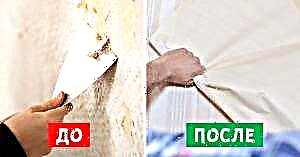 The structure of vinyl wallpaper consists of several materials: paper and polyvinyl chloride. This protects them from moisture and gives them strength. Due to these factors, problems may arise with the removal of these panels.
The structure of vinyl wallpaper consists of several materials: paper and polyvinyl chloride. This protects them from moisture and gives them strength. Due to these factors, problems may arise with the removal of these panels.
If they are pre-sprayed with water before the removal procedure, as many do with paper wallpaper, the penetration of moisture into the internal structure of the canvas will prevent the polyvinyl chloride layer. What to do in this case? You must complete the following steps:
- Walk with a sharp wallpaper tiger on the surface of the wallpaper. Due to this, the structure of the canvas is damaged, and water freely impregnates the removable finishing material.
- Using a soft roller or sponge, moisten the cloth and wait 5-10 minutes.
- With a spatula or knife, they pry the upper part of the wallpaper and gradually, slowly, pull it down.
- After removing the wallpaper, it is important to clean the remaining paper scraps with a spatula.
Thanks to this technique, you can remove vinyl wallpaper from a wall that does not want to peel off. An important stage of this work is a good walk on the wall panel with a wallpaper tiger.
How to remove washable wallpapers from the surface
 Wall panels can be softened with a steam generator - this will facilitate the work at times. This solution will not only soften the structure of the wallpaper, but also the glue itself. This occurs under the influence of hot steam.
Wall panels can be softened with a steam generator - this will facilitate the work at times. This solution will not only soften the structure of the wallpaper, but also the glue itself. This occurs under the influence of hot steam.
Such a solution is much more effective than simply soaking the canvas. After steaming, minimum efforts must be made to tear off the old decorative coating from the wall.
Effective Techniques
There are several effective ways by which you can remove old wall coverings effortlessly:
- The wet method is known to many. It consists in moistening the paper web, after which it moves away from the wall. This option is perfect for removing loose paper-based wallpapers. This material is excellent in moisture permeability. If we are talking about non-woven wallpaper, then before the soaking procedure, you need to walk around with a wallpaper tiger. After that, with the help of a spatula, it will be possible to tear off the canvas from any surface.
- The dry method is suitable for shabby wallpapers that are removed from the wall without much difficulty. If necessary, use a spatula and a sharp knife.
- The steam method includes a combination of moisture and hot steam. This effect destroys the adhesive base of the canvas and softens it. For these purposes, use a steamer, or a professional steam generator.
- The use of chemicals is justified in cases where the wallpaper can not be removed by a simple mechanical means. In this case, they are pre-treated with special means, and then removed from the wall.
How to tear off the wallpaper, adhering to the concrete wall?
 If the old panels tightly stuck to the concrete surface, they can be removed using popular chemicals.
If the old panels tightly stuck to the concrete surface, they can be removed using popular chemicals.
These products are purchased in construction departments. The main advantage of this method is that the special equipment used will help remove the wall covering in the shortest possible time.
How to use
 The solution is prepared from a powder in which a soft roller is moistened and the product is applied to the wallpaper. Those paintings that have a water-repellent coating must be pre-treated with a wallpaper tiger.
The solution is prepared from a powder in which a soft roller is moistened and the product is applied to the wallpaper. Those paintings that have a water-repellent coating must be pre-treated with a wallpaper tiger.
After application, it is recommended to wait a couple of hours. During this time, the chemical will react with the glue and dissolve it. After that, the canvas is pry off at the top with a sharp object and comes off the wall.
Most manufacturers claim that such products do not contain harmful substances that pose a danger to human health. However, it is better to wear safety glasses and rubber gloves before performing such work. If the product gets on open skin, it is better to rinse it under running water.
How to peel drywall wallpaper?
When performing subsequent work, it should be borne in mind that the drywall surface is not recommended to be moistened strongly. Otherwise, moisture will penetrate the cardboard, after which it will be removed along with the wallpaper.
If gypsum plasterboard has not yet been primed before gluing the decorative canvas, then in principle it will not work to remove the wallpaper without visible damage to the plasterboard.
In this case, it is advisable to use a wash to remove the old canvas. First you need to scratch the surface of the wallpaper with a sharp knife, a gear roller or a wallpaper tiger.
Special fluids will allow you to dissolve the glue structure, after which the decorative sheet will be removed without damaging the drywall. Apply special washings on the wallpaper in a metered amount, according to the attached instructions. In some particularly severe cases, removal is significantly more difficult, for this reason special machines and abrasive substances are used to remove the panels.
Folk remedies
 If the canvas tightly clings to the wall, and there is no steam generator at hand, there is a solution. Many use iron as their main tool. The removal technique is as follows:
If the canvas tightly clings to the wall, and there is no steam generator at hand, there is a solution. Many use iron as their main tool. The removal technique is as follows:
- the iron is heated to the highest possible temperature,
- a damp cloth is taken and applied to the surface of the wall,
- after which it is necessary to hold the iron on a dampened cloth to cause the generation of steam.
If the house has an iron with steam function, the task is greatly simplified.
You can also do something else. Some particularly resourceful builders heat pots of water to a boil and place them at the bottom of the wall. Thus, steam acts on the canvas after which it is easier to move away from the surface. Quite a difficult method, but despite this very effective.
And yet, the most commonly used folk remedy for removing old canvases is the use of a spatula and a wet rag. It is this method that every second novice builder removes the wall covering in his house. This technique can be called universal.
How to prepare for the finish?
 Before proceeding with the removal of the old decorative canvas, you need to properly prepare the room:
Before proceeding with the removal of the old decorative canvas, you need to properly prepare the room:
- To completely free the room in which the work will be carried out from furniture. Those elements of furniture that could not be removed for some reason should be covered with a rag or film.
- You will also need to cover the floors. To prevent the film from slipping, sheets of thick cardboard are laid on it.
- Removing the wall using water requires precautionary measures. It is necessary to turn off the electricity and seal the sockets with plastic wrap. Thanks to these actions, accidental closure can be prevented.
- To prevent the spread of garbage throughout the house, on the threshold you need to lay a damp rag, and at the entrance there are special curtains made of polyethylene.
Also, before performing subsequent work, you need to take care of the availability of the necessary tool.
Removing wallpaper from the wall will not be difficult only if it is acquainted with the important nuances of this issue. It is important to comply with the above rules and act in accordance with the designated plan. Only in this case will it be possible to cope with this task as quickly and comfortably as possible.
To what extent do you clean the wall
When plywood, you should very carefully remove the old layer of wallpaper, without leaving even small fragments. It is such a clean surface that will allow you to stick a new layer without blisters and bumps.
In 90% of cases, it’s enough to use the simplest way to remove wallpaper, and we will talk about it later, but if you entered the 10% of the “lucky ones” and the sweat is already flowing by stream, and your nerves started to pass - scroll down the article, there we will talk about emergency situation.
The easiest and fastest way
- Free the room from all the furniture or place it in the center of the room and cover it with cellophane or newspapers.
- For safety, turn off the electricity in the apartment. Seal sockets and switches with masking tape to prevent dirt from entering them. And the dirt will appear now, believe me.
- Prepare the following tool and materials:
- a bucket of hot or warm water,
- wide roller (you can old),
- narrow and wide spatulas,
stopwatch.
- Dampen 2-3 strips of wallpaper from top to bottom with a wet roller. Please do not flood the neighbors - water is unnecessarily unnecessary.
- Note 20 minutes. During this time, the material and glue will absorb enough moisture.
- With a spatula, pry off the corner of the wallpaper and separate it from the wall. Scrape small pieces with a spatula.


- Return to step 4 and say goodbye to all remaining canvases.
It may take about two hours to clean the walls of a room of 20 square meters. More time may be needed in cases where old paper wallpapers are glued to the conscience, and even worse, to PVA glue. Also, more time will be spent on processing materials with a water-repellent layer, such as vinyl wallpaper.
Tip: Cleaned walls should dry. At least a couple of hours. Only then proceed with the new finish.

Life hacks and folk remedies
To make the process of wallpaper removal faster and more effective, read what additional magic tools you have at hand. It is time for them to bring real benefits to humanity.
- Laundry soap. Add soap shavings to warm water before applying to the wall. Such a solution will slightly speed up and facilitate the process. Enough a quarter of the grated piece to add to a bucket of water.
- Fabric softener. If not sorry. Use like soap - add to water. The effect is similar - it will be easier to shoot the wallpaper. One cap is enough.
- Table vinegar. Violets, unlike the previous life hack, will not smell, but vinegar will have its effect. It will take 5 tablespoons per bucket.
- Wallpaper glue. Yes, adding wallpaper glue to the water will help our cause - the solution will become more viscous and better (longer) will stay on the canvases and soak into them. Remember when we glue the wallpaper - how they soften when they lie down with the glue applied, waiting for their moment. Take 5-6 times less glue than according to the instructions.
- Special solution. If you take care in advance, you can buy a special powder or mortar in a construction or hardware store that will cope with the task much better than the remnant that has been elevated for all times to wash. The following companies produce these magic solutions and powders, feel free to take them if you see them on the shelves:

Follow the instructions on the packaging.
Method number 1: use water
The process of removing the old finish from the walls or ceiling without extra effort is not complete without a faithful assistant - warm water, and consists in wetting the walls to soften the glue layer. Work can be done with a sponge, rag, roller or spray gun.


Most often, after the glue has soaked, the dense paper material is very easily and quickly removed from the walls. Work is best done starting from the corners or from bottom to top. To do this, with the edge of a spatula or other working tool, you need to pick up the corner of the wallpaper sheet and pull it towards you, while lifting it up.
Method number 2: water + mechanical impact
How to remove wallpaper from the walls if they do not absorb moisture well or are not capable of it at all, for example, washable, non-woven, vinyl? In this situation, it is required to make incisions or holes throughout the pasted area. This can be done with the sharp angle of a spatula, a knife, a roller with carnations protruding from it, or a “wallpaper tiger” - a specially created device for scratching wallpapers.
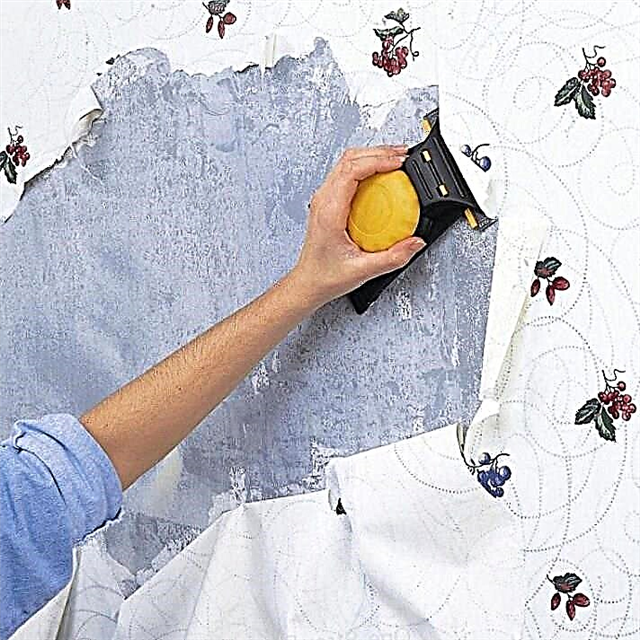

After the vinyl or other durable wallpaper is cut or perforated, warm water will again be required, which needs to be moistened with the glued wall and wait 15-20 minutes. Then the same actions are performed as in method No. 1, aimed directly at removing the coating from the wall.
Method number 3: hot steam
You can swell glue and paper with a steam generator, steam squeegee, and even a steam iron. After exposure to steam, most coatings are removed from the walls and ceiling with a wide spatula or scraper quickly and easily.


We remove the old wall covering - the order of the work
Wallpaper on a paper or other basis is best removed from top to bottom - we pry them with a spatula or scraper their edge and pull the strip down. We lodge heavily lagging areas with the same tool, helping the material move away from the surface. In situations where such a scheme does not work (the wallpaper is firmly attached and does not want to be removed), the old adhesive should be softened a little. It is done like this:
- wet the old material with a sponge or sprayer,
- wait 15 minutes
- wet the wallpaper again.
It is recommended to moisten a small section of the wall, remove old material from it, and then wet another piece. If you try to soften immediately a large area of the coating, it is likely that some of the wallpaper will have time to dry again, while you remove the coating in another area. The liquid will easily penetrate the old material if you first scratch it with a scraper or an ordinary knife.

Humidify a small area of the wall
Swollen paper wallpapers are removed relatively easily (use a spatula). It will be even better to purchase washes - a special chemical preparation that is designed specifically for removing old wallpaper. It is applied to the wall, waiting for some time (it is indicated in the instructions for washing), after which the coating is peeled off with a spatula. Such a drug penetrates deep into the wall and effectively destroys the adhesive layer.
Sometimes soaking and even the use of special washes does not give the expected effect - it is possible that pasting of paper-based material has been carried out for a long time, and even with the help of Bustilat. How to remove wallpaper from the walls in this case? Specialists advise using an iron and a wet flap of cotton fabric. The latter is applied to old wallpaper and ironed. Wall material becomes hot. At this moment it is very easy to remove.
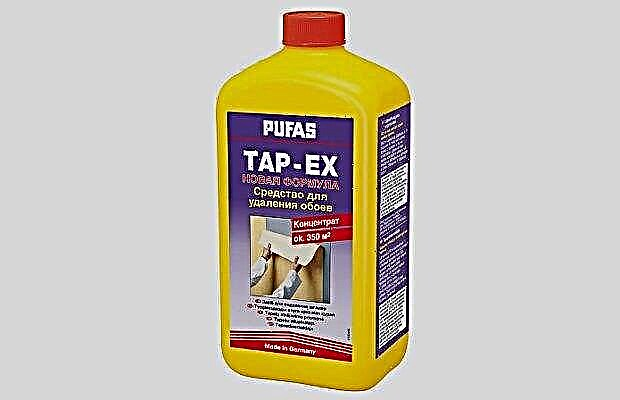
Special wash for wallpaper
In some cases, after all the "tricks" to remove old wallpaper on the walls, traces of glue still remain under them. You can get rid of them by means of an emery cloth with large grain. It can be used manually, but it is objectively difficult and long. It is better to use a grinding machine, which in a couple of minutes will make the wall "pristine" clean. After that, do not forget to putty it in order to smooth out all the surface irregularities.
The described methods will allow you to remove old paper-based wallpapers. They are also suitable for removing coatings under which newspapers were (so our parents and grandmothers glued, trying to ensure that the material held as tight as possible). Modern wallpaper (non-woven, vinyl) is much easier to remove. About it below.
How to remove liquid wallpaper from the wall
Features of liquid wallpaper is that they do not stick, because this is not a rolled material. This is a kind of putty that is applied to the wall. The products consist of silk, cellulose fibers, cotton, coloring pigment, adhesive and other additives. After work, a high-quality, durable and durable finish is formed. In this case, the color of the wallpaper can be changed using acrylic-based paint or a water-based emulsion.
If necessary, they are easily removable. How to remove liquid wallpaper from the wall? It is enough to heat the water, moisten the surface with a rag or by means of a spray bottle. After a while, the material will swell and be easily removed with a spatula.
If the water did not help and the surface did not soften, you need to mix a weak primer solution. Then the result will be 100%.
Why is it necessary to remove the old coating
It should be noted right away that in old apartments and private houses you should not try to peel the wallpaper to the bottom, it is better to simply soak the top layer and remove it, and glue new material on the remaining paper. The fact is that the walls in such rooms are quite thin and do not differ in evenness, so if you remove the old wallpaper from the walls completely, you will have to level the surfaces and carry out sound insulation measures.
In all other cases, it is recommended to remove the material. This need is explained by the fact that if you do not tear off the wallpaper, then a new layer may become bumpy. Such a relief will appear on products of any type
In addition, it is important to remember that sticking layers of material cannot be infinite. Sooner or later, this cake will become so thick and heavy that it will simply fall off the surface
Also under the new coating, mold or fungi may begin to develop. This will not only negatively affect the appearance of the walls, but can also badly affect the health of residents.
The use of special tools
You need to resort to this option if you didn’t succeed in removing the wallpaper in the previous ways, or if you simply don’t have time to do it. There are cheap options on the market that are non-toxic. The principle of operation is as follows:
- The product is sold in powder or gel form. It is diluted according to the instructions on the packaging and mixes well.
- With a roller or sponge, a wallpaper remover is applied to the wallpaper in an even layer.
- As is the case with water, you need to leave everything until absorbed. Time is indicated on the package. It all depends on the type of product: it will take from a few minutes to 3 hours.
- Then the wallpaper from the ceiling or walls themselves will begin to lag. Then a putty knife is used and everything comes off manually.
- If you work with waterproof sheets, then before wetting and removing wallpaper from the walls, it is better to process them with a knife or wallpaper tiger.

On this work is completed. As for the choice, then specialists prefer to use such substances:
One bottle will help to dismantle the wallpaper on an area of 100 m2. With it, paper, textile, vinyl, non-woven and other wallpapers are removed.
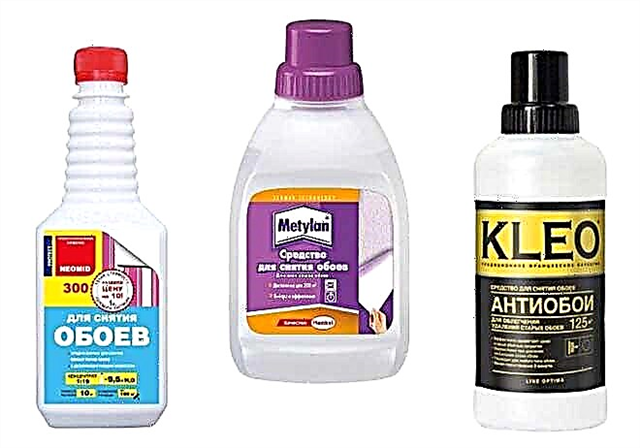
We remove the wallpaper glued to PVA
The peculiarity of PVA is that it does not dissolve in water. Therefore, before peeling off the wallpaper, you need to consider the features of the process. The easiest option is to use vinegar or laundry soap. Alternatively, a combination of methods.
Soap is required to grate, pour 4 liters of water and boil the contents. The solution moistens the canvas, after which the strips are torn off the wall using a spatula.
Or take vinegar 9% and dilute it with 450 ml of water. This means to process the walls. For best results, soap and vinegar water are combined. This is a killer mixture that will surely make the trellis peel off.
If the products are protected from moisture, then fabric softener is added to the product. A bucket of water needs 300 ml of the product.
Ways to tear off wallpaper from the wall
It should immediately be noted that the technique of removing wallpaper of any type boils down to preliminary wetting of the material with its subsequent removal using specialized painting tools (spatula, knife, scraper), so before you remove the old wallpaper, you should make a series of preparatory work. Namely, to protect floor surfaces from dirt and construction debris, to de-energize the place of work, and also to wet the material to be removed.
How to tear off old Soviet wallpaper from the walls of the video
It should be borne in mind that the peeling of the wallpaper can be ensured due to abundant moisture between the paper and the base of the wall, which is why it is advisable to adhere to the following recommendations when performing these operations:
- In one run, wet a small section of the wall (1.5–2 square meters), sufficient to perform work until the material dries,
- To moisten the finishing materials, use a warm aqueous solution with a small addition of detergent,
- The process of applying liquid to the walls is carried out using a sponge, rags or using a spray gun, avoiding the destruction (deoxidation) of the base base.
In the future, after 10-15 minutes (enough time for swelling), the old wallpaper must be completely removed from the wall surfaces using scrapers, spatulas, specialized devices. While the further dismantling of the wallpaper occurs according to the identical technology in compliance with all of the above recommendations.
However, in some cases, the use of standard technology to quickly and easily remove old wall-paper from the wall is considered unacceptable and requires the implementation of alternative solutions.
So, in a situation where it is supposed to peel off the wallpaper having a dense structure (vinyl, non-woven, washable types), the mechanical destruction of the protective layer, contributing to the effective penetration of moisture to their base, should be a mandatory action. For this purpose, it is recommended, at the preparation stage, to perforate the wallpaper panels using an assembly knife, spatula or similar construction tools. And already in the future, carry out humidification and dismantling of materials from wall bases.
How to shoot old wallpapers quickly and seamlessly video
And in some situations, carrying out these works can be greatly simplified by using specialized tools to remove old material:
Wallpaper "tiger" (needle roller) is an excellent tool for applying perforation to the wallpaper, however, due to the design features, the unprofessional use of this tool can cause mechanical damage to the walls (destruction of putty, plaster),
Steam generator allows you to destroy the adhesive by moistening the material with steam. As an alternative to the specified device, an iron with a damp cloth can act (the wallpaper is ironed through moistened material),
Specialized liquid-based solutions for removing old wallpaper (QuelydDissoucol, Atlas Alpan) contribute to the effective penetration of moisture to the base of the material. In addition, these drugs are environmentally friendly and can easily neutralize even difficultly soluble adhesives. Moreover, the technique for quickly removing wallpaper in this case is identical to the standard technique and involves wetting the material with a rag or sponge and then removing it as it peels off the wall (usually after 2-3 hours).
Tips: how to remove non-woven wallpaper
Many people, when they start doing repairs incorrectly, relate to preparing walls. After all, it is necessary to remove old wallpapers, however, many do not do this because of ignorance or for some other reason. It’s a lot easier to just paste new wallpapers onto old ones, but as a result you have to do double work and spend extra money on re-gluing.

To make it easier to remove non-woven wallpaper, it is worth using special technical devices that emit steam
There are several reasons, knowing that any master will reconsider his attitude and accurately remove the old wall decoration:
- A perfectly smooth and beautiful surface will not work if you glue new wallpapers on old ones.
- Irregularities, tubercles and air bubbles appear if not immediately, then precisely after some time.
- The glue between the old wallpaper and the wall dries over time and is not so strong, so when a new one, that is, heavy wallpaper and glue, is added over the old coating, the finish does not last long and can not be considered durable. Wallpaper will detach from the wall at any time.
Also, the old coating is susceptible to mold and various fungi, and the landlord cannot know about it. This fact is very dangerous for the health of everyone who lives in it. The presence of microorganisms between the old wallpaper and the wall can be found out only by removing the wallpaper. After that, mandatory processing of the walls is carried out.
Removing non-woven wallpaper from a concrete wall
 Such a wall covering is not only easily glued, but also removed. Sometimes it may be necessary to simply take the strip by the upper part and gently tear off the decorative layer, removing the entire strip.
Such a wall covering is not only easily glued, but also removed. Sometimes it may be necessary to simply take the strip by the upper part and gently tear off the decorative layer, removing the entire strip.
In this case, hydration may not be necessary.
After removal by the dry method, it will be necessary to check the substrate for defects and the quality of their attachment to the wall. If everything is in order, then you can glue a new coating.
If the substrate tears during the work or peels off the wall, you will need to completely dismantle it.
Otherwise, the preparation will be of poor quality, and this will affect the new material used.
To completely dismantle the coating, you will need to use the equipment described above.
The removal process is as follows:
- Hot water is applied to the wall with a sponge, evenly soaking one strip of wallpaper.
- Next, you need to wait about 10-20 minutes until the interlining becomes soft.
- When the wallpaper begins to swell, they can be removed with spatulas.
- If the material is poorly removed, the wetting procedure is repeated until all residues are removed.
After dismantling, the base must be checked for glue residues. It must be completely removed with water and a spatula.
How to remove liquid wallpaper
Another challenge is for those who need to remove liquid wallpaper. After all, this is not wallpaper in the usual sense of the word, but a finish similar to plaster, tightly fixed to the wall. However, there are no difficulties in this: we protect the floors, the door, skirting boards, sockets and furniture remaining in the room, and proceed.
- Removing liquid wallpaper with water and a spatula. If no varnish is applied over the coating, then we can also soak the glue with water:
- Wet the surface of the walls well with a roller or a clean brush,
- We wait about 10 minutes
- We check the readiness with a spatula: the wallpaper should go easily,
- Remove the wet layer.
Hint: you can add some kind of detergent or fabric softener to the water.

Removing liquid wallpaper with construction tools. Removing liquid wallpaper with this method is fraught with a lot of dust, so protect the room and face, work with glasses and a respirator. To remove in this case, use a grinder or grinder
You need to work very carefully.
A building hair dryer can also cope with liquid wallpaper. Hot air peels off the coating, which then simply lags behind the wall
Wallpaper in this case can be pre-wetted.
Lightening the layer or primer of liquid wallpaper without removing. The methods given above are rather laborious. Therefore, if you are satisfied with the surface texture and you want to change only its color, then you can go the simple way: apply a layer of light water-based paint on old liquid wallpaper. After drying, it forms a layer that will not shine through when applying new liquid wallpaper.
How to easily and quickly remove old wallpaper folk remedies?
There are many ways to remove decorative coatings from walls. The removal option depends on the composition and quality of the wallpaper.
- Ferry. You must use a steam generator. To do this, water is applied to the walls and after 10 minutes the steam generator is turned on. From such a manipulation, the wallpaper itself will peel off.
- Spatula. This is one of the best options for removing vinyl wallpaper. First, the top layer is removed with a spatula. After that, a layer of paper will remain on the wall. It is removed by soaking. Simply moisten the wallpaper from the spray gun and wait for it to soften.
- Glue. It is necessary to prepare an adhesive solution. To do this, add some glue to the wallpaper to warm water. Moisten the walls with liquid and wait a bit. Remove the coating.
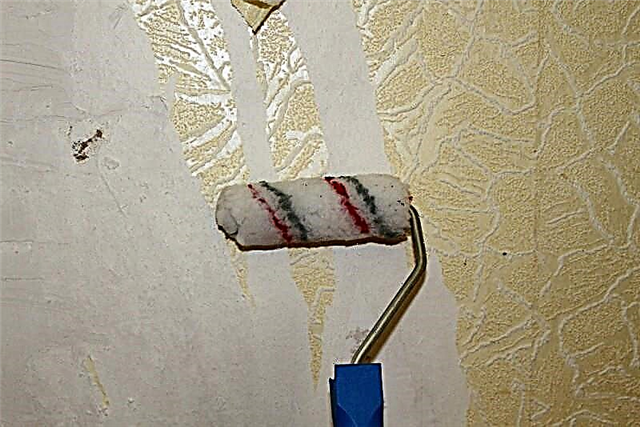
How to easily and quickly remove old wallpaper folk remedies?
No. 2. The traditional way: removing wallpaper with water
The wet method works in most cases. Moreover, it is more hygienic compared to the previous version, as less dust will be generated in the process. The procedure is as follows:
prepare the room, glue the plinth, sockets and switches,
the essence of the method is to soak the wallpaper so as to soften the material itself and dissolve a significant part of the glue, so it is necessary to prepare water. It is better to take warm water, and to guarantee it, you can add a little soap, dishwashing liquid or fabric softener. These substances will significantly speed up the process,
it is best to moisten the wallpaper with a sponge (but you can use a spray bottle, spray gun, rags, roller), trying to apply a sufficient amount of liquid to soften the wallpaper and glue, but also not overdoing it so that water does not flow on the floor and does not fill out sockets. After 20-30 minutes, you can proceed directly to the removal of wallpaper, until everything is dry. Surface treatment is better in parts,
for better penetration of water inside the wallpaper and under the wallpaper, the top layer can be perforated with a needle roller, knife or wallpaper tiger. If the wallpaper has a protective water-repellent layer, then you can’t do without such a trick,
when the canvas is sufficiently saturated with water and begins to slightly move away from the surface, it can be pry off with a spatula and begin to tear off. It is better to tear from the seams
If some areas do not respond, moisten them again,
the edges of the spatula should be sharp, so they can be pre-sharpened with emery,
with extreme caution, take wallpapers near sockets, switches and counters,
if some areas still do not lend themselves, you will have to arm yourself with a scraper, just work carefully so as not to damage the layer of plaster,
experts advise using household soap when removing wallpapers that were glued to PVA. Rub the bar, pour 4 liters of water and boil
An alternative is 9% vinegar: 450 ml is enough for a bucket of water. If you add vinegar and soap, you can get a tool that can even cope with wallpaper that has eaten into the wall. To remove waterproof wallpaper in warm water, you need to add fabric softener at the rate of 300 ml per bucket of water,
immediately remove all removed fragments into bags or sacks. After finishing work, wipe the walls with clean, warm water and a sponge.
This method is ideal for paper wallpapers: single-layer is soaked in literally 5-7 minutes and can be perfectly removed from top to bottom, two-layer will take 10-15 minutes, and only the top layer can be removed. If you are going to glue the wallpaper, then the bottom layer of the old can be left. If not, then the procedure will have to be repeated. In the case of paper wallpaper covered with a protective moisture-proof film, as well as in the case of vinyl, non-woven and washable wallpaper, you will have to try a little more. At a minimum - to perforate, and as a maximum - to use special compounds and other tricks.
We remove the wallpaper from drywall

When drywall was just in fashion, many craftsmen did not bother with puttying and, in order to save money and time, glued wallpaper directly onto drywall sheets. Its paper top layer, when adhered to the same base of wallpaper, creates an inextricable “union”. Therefore, it is practically impossible to remove wallpaper from drywall without damaging the surface of the walls.
What to do in this case? Follow the advice of professional builders:
If the wall is covered with non-woven wallpaper, carefully remove the top non-woven layer to keep the backing onto which new wallpaper can be glued.
Buy a special liquid for removing wallpapers at a hardware store. It is applied instead of water and acts on the adhesive, while maintaining the integrity of the drywall.
In difficult cases, masters use a special steamer
At home, it is easily replaced by an iron. To clean drywall from old paintings, dampen the wallpaper with water and iron it with a hot iron through a rag. This "grandfather" method, albeit slow, but effective.
Vinyl wallpapers
Paper wallpapers, unlike vinyl, are completely waterproof, so they are easy to soak in liquid and remove. But with vinyl the task will be more difficult. This type of wallpaper has a protective layer on top that does not soak under the influence of water. Therefore, this layer will need to be punched.
Scratches are made on the surface of the canvas. After that, the canvas can be moistened with water. The liquid will penetrate through the holes, due to which the bottom paper base is soaked. After a certain period of time (15-20 minutes), you can try to shoot the first lane. To do this, pull the edge of the canvas from the bottom up, while making serifs with a spatula.
If such wallpaper does not swell under the influence of ordinary water, then you can purchase a special composition for removing wallpaper. It is bred according to the instructions and applied to the surface.
If there is no such special tool, then you can apply an adhesive solution. The glue used to glue this wallpaper is taken, then divorced with water in a proportion of 1:10. Using a roller, the liquid will need to be applied to the old wallpaper and left for 10 minutes. This solution acts on the glue under the wallpaper and dissolves it. Due to this, the wallpaper will easily lag behind the wall.
What to do if you got a vinyl or non-woven wallpaper
We act, as we described above, by the method of exposure to moisture, but before water procedures, walk with a sharp knife or a wallpaper tiger (most importantly something sharp) along the old wallpaper and make incisions. Water will penetrate the vinyl film into the paper and it will not be difficult for you to finish your work on time.

What to do if the wallpaper is glued to PVA glue
Brace yourself. This is the most difficult case. Jewelry work. Water, even with an admixture of diamonds, will not help you. Take a sharp spatula and forget about plans for the whole evening, clean centimeter by centimeter. Or ask your neighbors for a grinding machine (grinder) and buy a nozzle with stiff bristles - the process will go faster.

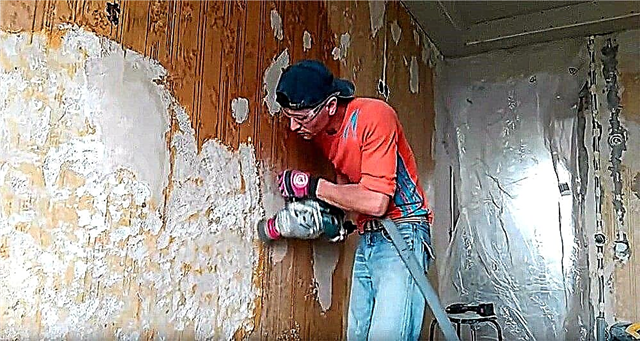
Watch this video - Goal for invention of cunning:
If the old wallpaper is still on the wall
Guys, let's be honest, if you read the article up to this point and the old flower wallpaper is still unharmed on your wall - or you are doing something wrong and better read the article slowly from the very beginning, or - you know what - leave this venture . If, with such inhuman efforts, you still could not separate the paper and stone now, then, believe me, they will never part, and under no circumstances.
Tools for removing any kind of wallpaper
To find out how to quickly remove wallpaper from the walls, you need a little time and some equipment. To remove, you will need the following tools:
- two sharp spatulas of different sizes
- soap and water or wallpaper remover
- steam mop or iron with a piece of cotton
- perforation roller
- ladder
- knife, plastic wrap
- insulating or adhesive tape
To take wallpaper from the walls in a more correct and hygienic way in a wet way. This will generate less dust and the removal process itself will take less time. But if the canvas leaves the wall well, then you can restrict yourself to the usual option.
Wallpaper Removal Options
How to quickly remove old wallpaper from the walls, if there is no experience in doing such a job? First of all, you need to turn off the electricity or close up sockets and switches. To quickly remove old pieces of canvas from the walls, it is enough to touch the edge with a spatula and pull it, prying off and adjusting the unsuitable places. If this is not enough, then it is necessary to soak the old wallpaper. To do this, you need to go over the entire surface with a sponge moistened with warm water and soap, wait a few minutes and repeat the procedure.
In water, you can add not only soap, but also a dishwashing liquid or fabric softener. In this case, it is necessary to use a sufficient amount of water. If it is not enough, then it will dry quickly and do not have time to soak the glue, so tearing off the old wallpaper will be problematic. If there is a lot of liquid, then it can drain over the surface of the canvas or from the walls, which also will not give the desired effect.
How to quickly remove old wallpaper from the walls, if there is a steam generator? This option will be less time consuming. The steam that the device dispenses quickly softens both the paper base and the adhesive underneath. Old paper wallpapers that could not be removed the first time are removed with a spatula. The steam generator is only suitable for removing wallpaper, so it is often used exclusively by specialists. An analogue may be a steam or conventional iron with a steaming function. They will facilitate the removal of wallpaper on large areas and will significantly save both time and effort.
If you do not know how to remove old wallpaper from the walls, or if you are doing this work for the first time, it is better to use special liquids to remove the wallpaper. Usually a bottle is enough to tear off the wallpaper on the square up to 100 square meters. The liquid will quickly penetrate under the paper layer and effectively soak the glue. Such funds are much more effective than ordinary soapy water; it can be used when working indoors. It is mixed with water and sprayed over the entire area of old wallpaper. After a few minutes, the old layer can be easily removed with a spatula. Such a tool lends itself to paper, textile, vinyl and other canvases of wallpaper.
Removing wallpaper with PVA glue
How to remove wallpaper from the walls, if water-insoluble PVA glue was used for pasting these decor elements? Such work will have to be done manually and use a sharp spatula. Before you quickly remove the canvases of wallpaper that were glued to the paper surface in the form of a newspaper, it is necessary to check the tightness of the fit on a small segment. After that, it is better to choose a convenient removal option.
You can also use a grinding machine. It will help to quickly remove old remains and large pieces of wallpaper from the walls. Such a device can leave grooves and strips on the wall after work. The plaster is damaged, so in the future, after the old wallpaper has been removed, it will be necessary to level the surface.
If special equipment is used, it is necessary to take care of the equipment and use a face mask. Grinding creates a lot of dust in the work, which must be protected. Using these tips, removing wallpaper will be quick and harmless.
Types of wallpapers used in modern interiors
Before you tear off old paintings, you need to understand the types of this coating for the walls. The following types of wallpaper are available:
- vinyl
- non-woven
- liquid
- cullet
- washable
Removing vinyl wallpaper
Below is information on how to remove vinyl wallpapers from walls. They are easier to remove than others, because in their composition the main component is the film. Vinyl wallpapers are cleaned after wetting quite simply and depart in whole stripes. The edge of the canvas is touched with a spatula and gently stretches down. The paper component on a flat wall may remain in some places, but it can be easily removed.
Vinyl wallpapers can often be heavy, so it’s better to remove them in parts or layers. Those who are not familiar with how to remove vinyl wallpaper from the walls can clean the canvas with a spatula. This option of removing vinyl wallpaper from the walls is possible, but it is more time-consuming. For the first time, the process may not be so simple, but over time it will turn out to quickly remove wallpaper from the walls of vinyl or any other. Since the removal of vinyl wallpaper does not damage the surface and is easily carried out, more and more people are using this option.
Removing non-woven, washable and liquid wallpaper
Before you take off the wallpaper on a modern non-woven base, they must be perforated. It is advisable to do this so as not to damage the lower non-woven layer, which serves to strengthen the wall. If there is no need to save it, then the removal will occur with minimal effort. This fabric is durable, it is easy to remove. As with paper webs, just use a spatula.
To remove the washable old paintings of wallpaper, the use of water or special liquids alone will not be enough. The upper layer of the fabric can be removed quite simply, and for the lower tier of wallpaper it is better to take a roller or scraper. A good helper in this matter will be a steam generator or a conventional steam iron.
How to tear off a wallpaper having a liquid structure is given below. Such webs consist of a mixture of cellulose, cotton and water-soluble glue. If old wallpapers have such a basis, then to remove them it is enough to simply soak them with warm water. After swelling, it’s simple enough to understand how to quickly tear them off. With a spatula, the mass can be removed once. It is noteworthy that liquid wallpaper can be reused.
Removing wallpaper from a drywall
How to peel off old wallpaper if glued to a drywall? In such a job, it is important to leave the top layer, which is made of paper, intact. Special liquids, applied in a metered amount, will dissolve the glue and help remove any vinyl or paper wallpaper. In some cases, removal is also difficult using special means, so abrasive materials or machines are used to remove the wallpaper.
Before you begin to shoot old wallpaper from the walls, it is important to protect yourself and follow these tips:
- it is better to remove all the furniture from the room or cover it with a special captive, remove the curtains and remove anything that may get dirty
- stock up with the necessary tools to remove wallpaper from the walls
- when removing old wall-paper from walls it is necessary to take a certain amount of liquid
- old wallpaper canvases near the switches must be removed with caution
There is nothing complicated in quickly removing wallpaper from the walls. Such work can be handled independently. Enough to stock up with the necessary tools, equipment and patience. As a result, anyone will know how to quickly shoot wallpapers with different components. Any canvas wallpaper with a skillful approach will easily move away from the surface.
If you do not want to waste your time and carry out a laborious procedure yourself, you can turn to experienced craftsmen. Skilled professionals know how to quickly remove any type of wallpaper.

